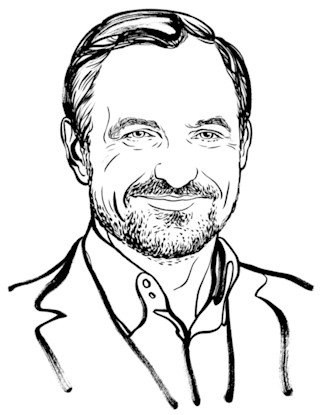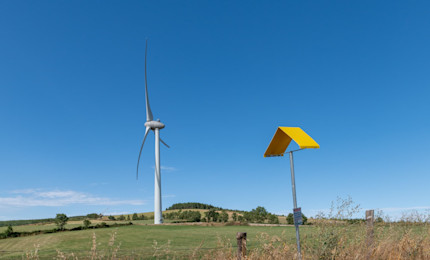Urgence gaz 0 800 028 800

Hydrogen: the central pillar of European energy sovereignty
Hydrogen is seen as being one of the preferred solutions for meeting European greenhouse gas reduction targets. Besides, the European Union is investing massively in the development of this energy carrier. So it is essential that we create a European hydrogen grid. Jorgo Chatzimarkakis, Chief Executive Officer of Hydrogen Europe, explains its challenges.
To what extent is hydrogen an asset for Europe?
Jorgo Chatzimarkakis – In June 2021, the European climate law established the new binding target of a 55% reduction in greenhouse gas emissions by 2030 compared with 1990 levels. As a solution for decarbonising industry and mobility, intermittent renewable energy storage and electricity production, hydrogen will enable us to meet that target while, at the same time, strengthening the Union’s industrial and economic competitiveness.
Against the backdrop of the current energy crisis, those targets could be toughened further. The European Commission (EC) has certainly got the message: the “Fit for 55” legislative package, the legislation on hydrogen and decarbonised gas, and the more recent “REPowerEU” communication, mark the dawning of a new age for hydrogen (H2), which is on the way to becoming a central pillar of the European energy system and the continent’s energy sovereignty. The Commission anticipates the development of 20 million tonnes (Mt) renewable hydrogen, half of it produced in Europe and half imported, which goes beyond the previously published targets in the European hydrogen strategy.
To achieve that, the EC is planning new funding worth 200 million euros for renewable hydrogen projects as part of Horizon Europe, with accelerated approval for projects under the IPCEI (1) on hydrogen. New legislation will complete the regulatory framework and stimulate production, consumption and the development of the renewable and low-carbon hydrogen market. Work on the technical standards relating to hydrogen, particularly production, infrastructures and domestic equipment, will also be speeded up. Alongside this, the creation of partnerships for green hydrogen and the development of infrastructures specific to hydrogen will help encourage the production and trading of renewable hydrogen at the European and worldwide scale.
What are the limitations associated with the development of a hydrogen network at the European level?
J.C. – At the moment the use of hydrogen is largely captive and private. There are still obstacles to the development of profitable H2 infrastructures, particularly across borders, and of a competitive hydrogen market, both of which are preconditions for the large-scale adoption of hydrogen. But these obstacles are currently being overcome, particularly with the Hydrogen and Renewable Gases legislative package, which reforms the gas industry, adapting it for renewable and low-carbon gases, and creating the framework for an open and competitive European market in hydrogen. The current geopolitical challenges have led the EC to supplement those provisions in light of the energy emergency, particularly through the highly favourable measures in the “REPowerEU” plan and its Hydrogen Accelerator.
Teréga is a member of Hydrogen Europe, of which you are CEO, and of the European Clean Hydrogen Alliance industrial partnership. What role do these two organisations play in the development of a Pan-European hydrogen infrastructure?
J.C. – With more than 400 members – businesses and associations – covering about twenty European regions, Hydrogen Europe brings together the whole value chain in the European hydrogen and fuel cell ecosystem. We’re proud to be deeply committed to the European Clean Hydrogen Alliance (ECHA), whose role is to create a raft of large-scale investment projects in the field of clean hydrogen. Our aim is to encourage dialogue and cooperation with all stakeholders: industry, political decision-makers and civil society. It’s only by discussing issues all together that we’ll be able to develop a hydrogen infrastructure, to benefit the EU and its citizens.
How is the sector preparing itself for the integration of hydrogen into the European grid?
J.C. – There are several ways in which hydrogen can be integrated into gas grids: by injection and mixing with natural gas, by the conversion of existing gas pipelines to carry H2, by the construction of a dedicated H2 infrastructure, and finally by methanation. These approaches complement one another and depend upon the production technology, the area in question and the timing of the projects.
Following the “REPowerEU” communication, the European H2 Backbone (EHB) has accelerated its vision of the future European hydrogen network: by 2030, 5 Pan-European H2 supply and import corridors could emerge, linking industrial hubs, ports and hydrogen valleys to regions of high demand – laying the foundations for the future large-scale supply of hydrogen. By 2040, the network would extend over 53,000 km of pipelines, covering 28 European countries. It would consist of nearly 60% converted gas pipelines and about 40% new ones, dedicated to H2. Transporting hydrogen along 1000 km of the Backbone would cost an average of 0.11 to 0.21 €/kg H2, making this the most attractive option in terms of quality-price ratio for a large-scale transporter over long distances. Teréga is one of the co-founders of the Backbone and benefits from an absolutely strategic geographical situation for scaling up hydrogen, particularly through its H2 interconnection projects with the Iberian peninsula.
(1) - Important Project of Common European Interest
Our expert: biography
Having completed his studies in political science at the University of Bonn, Jorgo Chatzimarkakis was elected a Liberal Member of the European Parliament in 2004. During his term in office he helped lay the foundation stone of the European Fuel Cells and Hydrogen Joint Undertaking programme, now known as the Clean Hydrogen Partnership. He was appointed roving ambassador for Greece in 2015 and became Chief Executive Officer of Hydrogen Europe in 2016.









